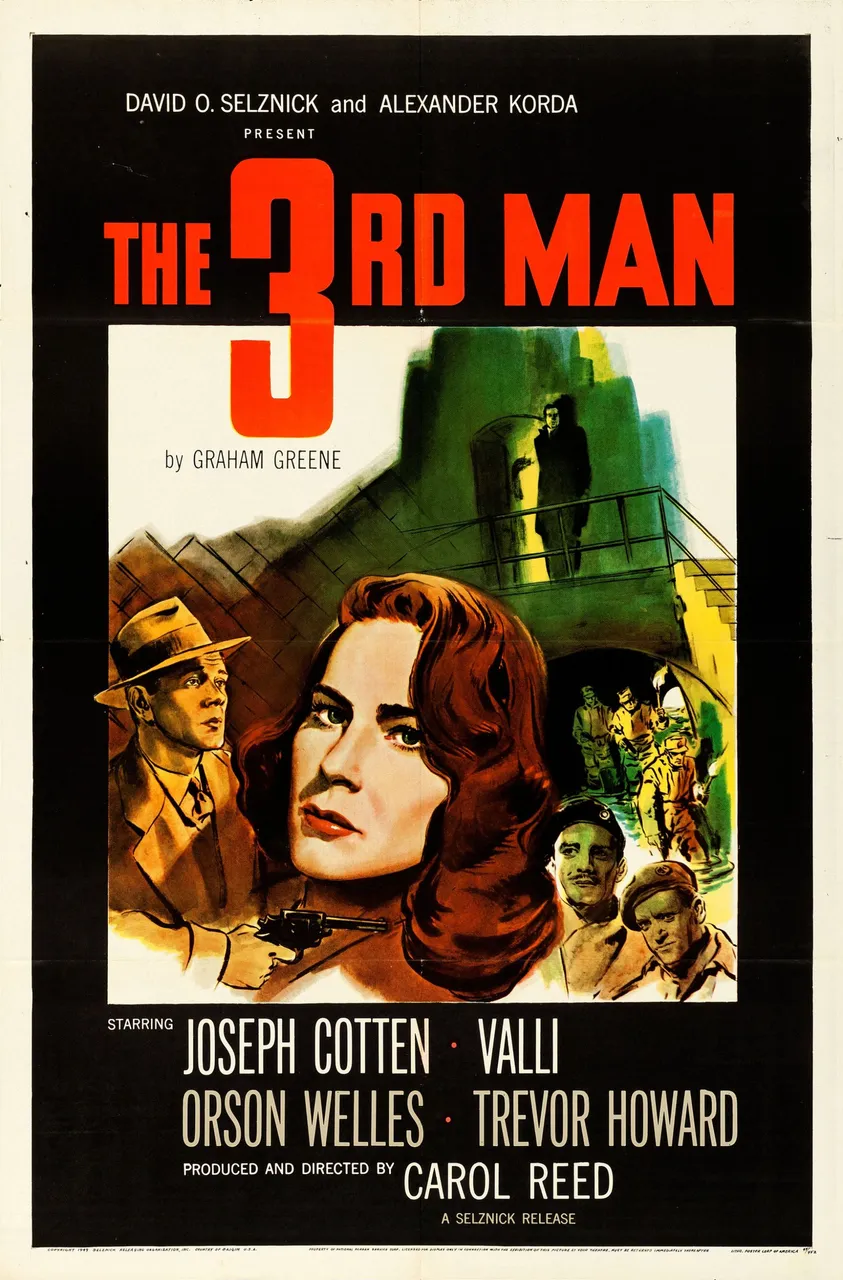
The Third Man is a 1949 film noir directed by Carol Reed, written by Graham Greene, and starring Joseph Cotten, Alida Valli, Orson Welles, and Trevor Howard. The story is set in postwar Vienna, where a pulp novelist, Holly Martins, investigates the mysterious death of his old friend, Harry Lime, and uncovers corruption in the city. The film is known for its atmospheric thriller and iconic performances, particularly by Joseph Cotten and Orson Welles. It is considered one of the undisputed masterpieces of cinema.
Plot
"Pulp novelist Holly Martins travels to shadowy, postwar Vienna, only to find himself investigating the mysterious death of an old friend, black-market opportunist Harry Lime—and thus begins this legendary tale of love, deception, and murder. Thanks to brilliant performances by Joseph Cotten, Alida Valli, and Orson Welles; Anton Karas's evocative zither score; Graham Greene’s razor-sharp dialogue; and Robert Krasker’s dramatic use of light and shadow, The Third Man, directed by the inimitable Carol Reed...".
The film centers on American Holly Martins, who arrives in Vienna to accept a job with his friend Harry Lime, only to learn that Lime has died. Martins decides to stay in Vienna and investigate the suspicious death. The atmospheric use of black-and-white expressionist cinematography, harsh lighting, and subtle "Dutch angle" camera technique are major features of the film, combined with the iconic theme music by Anton Karas.
Trailer
Cast
- Joseph Cotten as Holly Martins
- Alida Valli as Anna Schmidt
- Orson Welles as Harry Lime
- Trevor Howard as Major Calloway
- Bernard Lee as Sergeant Paine
- Ernst Deutsch as "Baron" Kurtz
- Siegfried Breuer as Popescu
- Erich Ponto as Dr. Winkel
- Wilfrid Hyde-White as Crabbin
- Hedwig Bleibtreu as Anna's Landlady
- Paul Hörbiger as Porter
Director: Carol Reed
Writer: Graham Greene, Alexander Korda, Graham Greene
Box Office Gross: $1,226,507
Distributor: Spiegel Media GmbH, Continental Home Vídeo [br], Warner Home Vídeo, Selznick International Pictures, British Lion Films Ltd., Vintage Video
Genre: Mystery & thriller
Release Date (Theaters): Feb 1, 1949
Release Date (Streaming): Sep 1, 2009
Theme
The film explores themes of moral ambiguity, betrayal, and the postwar atmosphere of Vienna. It delves into the complexities of friendship and love in a morally compromised world, where individuals are forced to make difficult choices.
Reception
The Third Man was well-received by critics and audiences alike. It is considered a classic of film noir and has been praised for its atmospheric cinematography, compelling performances, and iconic zither score. The film's unique visual style and narrative depth have contributed to its enduring legacy.
Production Challenges
The production of The Third Man faced various challenges, including filming in the war-torn city of Vienna, which added to the film's authentic postwar atmosphere. Additionally, director Carol Reed and cinematographer Robert Krasker overcame technical obstacles to achieve the film's distinctive visual style, characterized by the innovative use of light and shadow.
Settings
The film is set in post-World War II Vienna, a city divided among the four Allied powers. The war-damaged streets, sewers, and iconic locations such as the Prater Ferris Wheel contribute to the film's evocative and atmospheric setting.
Visual Styles and Techniques
The Third Man is known for its striking visual style, characterized by expressionist cinematography, dramatic lighting, and innovative camera techniques. The use of Dutch angles and deep-focus cinematography creates a sense of unease and tension, reflecting the moral ambiguity of the narrative.
Trivia and Fun Facts
- Orson Welles' iconic portrayal of Harry Lime, particularly his famous "cuckoo clock" speech, has become legendary in cinema.
- The film's haunting zither score, composed and performed by Anton Karas, became a cultural phenomenon and is closely associated with the mood of the film.
- The Third Man has inspired numerous homages, parodies, and references in popular culture, reflecting its enduring impact on filmmaking and storytelling.